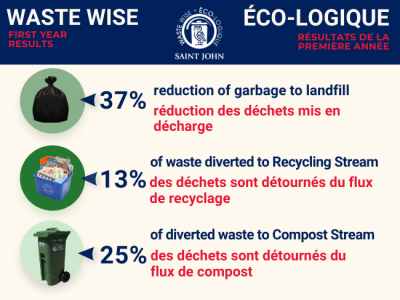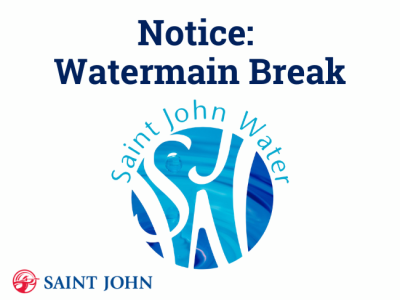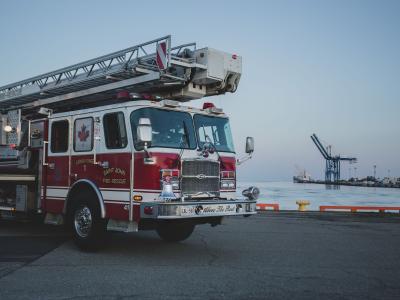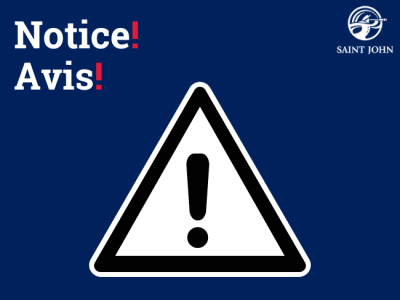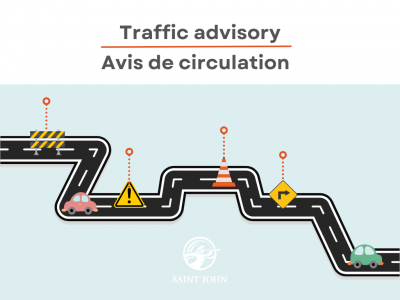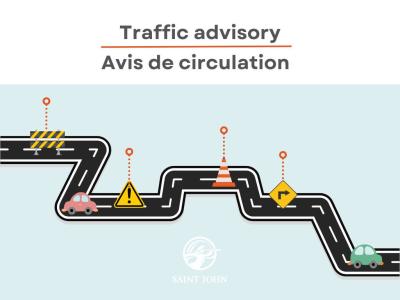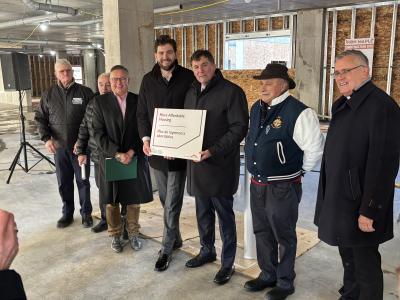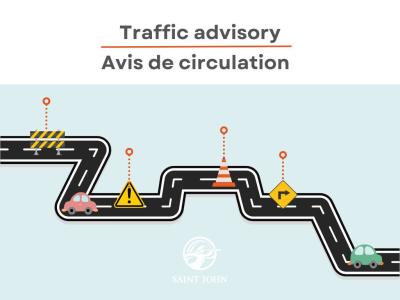For street events, you will need to provide your own sources of power. Generators can be rented from local supply dealers. If you choose to use a generator, you must place barricades around it for safety purposes.
Yes. Any temporary structure must be inspected by the Fire Department and/or Building Inspectors to ensure the safety of you and your guests.
Also, if you need to place stakes, fencing or other items into the ground, you must have the approval of the City AND you must call 1-866-DIG-LINE (1-866-344-5463).
Yes. Any temporary structure must be inspected by the Fire Department and/or Building Inspectors to ensure the safety of you and your guests.
Also, if you need to place stakes, fencing or other items into the ground, you must have the approval of the City AND you must call 1-866-DIG-LINE (1-866-344-5463).
For street events, you will need to provide your own sources of power. Generators can be rented from local supply dealers. If you choose to use a generator, you must place barricades around it for safety purposes.
Contact the Department of Health for more details.
Where the by-law permits the Fire Chief to adopt reasonable rules and regulations for the granting of permission for supervised public displays of fireworks, a competent operator is a person who holds a valid certificate to discharge Display Fireworks as issues by the Explosives Safety and Security Branch of Natural Resources Canada.
The City of Saint John's Housing for All Strategy embodies our community's united and compassionate approach to addressing homelessness over the next three years, using a person-centered and human rights approach.
CITY OF SAINT JOHN'S HOUSING FOR ALL STRATEGY
With the goal of creating safe and welcoming spaces for all residents, the strategy supports individuals in finding housing that meets their unique needs. Additionally, it aims to make homelessness a rare, brief, and non-recurring experience. Currently, there are 344 chronically homeless people in Saint John, with 663 residents having experienced homelessness for at least one day in the past year.
With the Housing for All strategy, the City and community partners are focused on a shared vision of every resident having a safe, supported, and sustainable home. The strategy is the roadmap. There are four foundational priorities that will be built out to achieve the 28 action items identified within it.
The four foundational priorities identified for the next three years include:
- Coordination and Governance
- Emergency Supports
- Prevention, Education, and Safety
- Housing Support
The Housing for All Strategy will continue to develop and adapt in response to the community’s needs and lessons learned from implementing its various actions. Together, as a city with a big heart, we can ensure that everyone in Saint John has a place to call home.
The Saint John Fire Department has been operating since 1786. Today, the department is responsible for servicing 126 square miles of the City.
Annual Statistics 2024 as of December 31, 2024
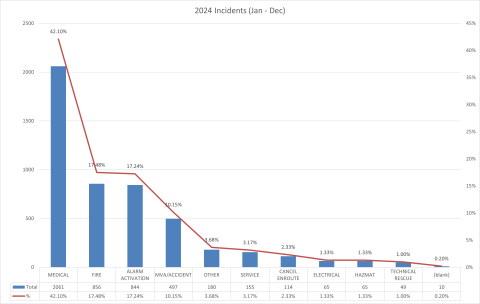

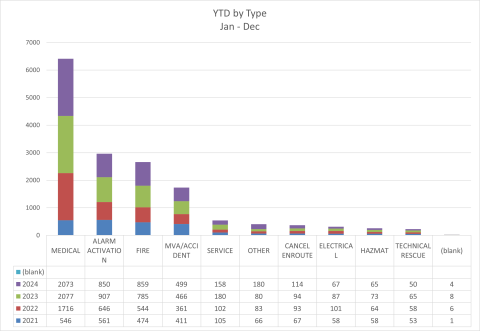
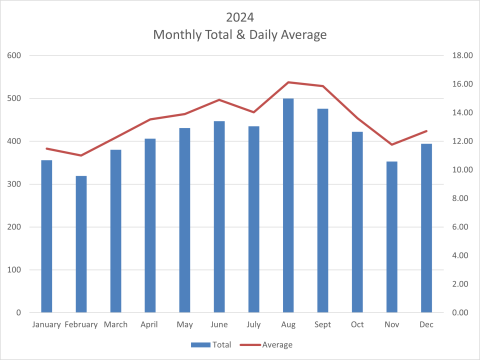
The department’s focus is on reducing loss of life, personal injury, property damage or impact on the environment through six primary services:
Fire Rescue and Suppression
The Fire Rescue and Suppression Service provides emergency mitigation and rescue response to residential, commercial, and industrial fires and/or explosions. Saint John's unique makeup of residential, old balloon frame housing stock, commercial properties, and heavy industry presents firefighters with unique response challenges—challenges our people are trained to meet.
Technical Rescue
The Technical Rescue Service carries out emergency rescue operations to people trapped by their physical environment—typically due to water, ice, motor vehicle accident, structural collapse, confined space, or high angle. The Technical Rescue team uses specialized equipment and training, and adheres to the latest NFPA standards for technical rescue.
Fire Prevention and Investigation
The Fire Prevention Division promotes a proactive approach to fire and life safety through public education, training, inspections, and code enforcement. The Fire Investigation Service determines the cause and origin of structure or wildland fires. This assessment may form the basis of a criminal investigation by the Saint John Police, and could lead to changes in processes, or product recalls.
Medical First Response
First responders provide life-saving care to the citizens of Saint John in their time of need. Firefighters use the latest techniques and equipment to provide First Responder CPR/AED care when the Saint John Fire Department is first on the scene. The medical care model adapts to the needs of the community and has recently added Narcan administration to the scope of practice.
Hazardous Materials (HAZMAT) Emergency Response
The HAZMAT team's goal is to protect people, property, and the environment from the consequences of hazardous materials releases. These team members are trained to operate highly-specialized metering and monitoring equipment, in the use of specialized chemical protective clothing, hazard-risk assessment, and decontamination. Due to its high level of HAZMAT response expertise, the SJFD provides hazardous materials response services to communities throughout the southern half of the province.
Once the gifts are opened and the parties are over, it’s time for the Christmas tree to move on. To help you, the City will once again be offering its free and convenient annual Christmas tree drop-off program in the new year. Please ensure all decorations have been removed from your tree prior to dropping it off. All sites will be open from January 1 to January 12, 2024.
Site locations:
- Charles Gorman Arena – 80 University Avenue, North
- Crescent Valley – Between 30 and 38 Taylor Avenue, North
- Peter Murray Arena – 711 Dever Road, West
- Forest Hills Ball Field – 651 Westmorland Road, East
- *Old Sugar Refinery – 330 Charlotte Street, South/Central Peninsula
*South/Central Peninsula residents are advised that the specific drop-off site commonly referred to as the “Old Sugar Refinery” is located at the very end of Charlotte Street and Vulcan Street. Trees are not to be deposited at the Bulk Terminal Truck Entrance or any other location on Port Saint John property.
Look for the designated area at each location. Sites will be plowed and maintained for the safety of the public and workers.
If you are unable to drop off your Christmas tree to a designated site, you can:
- Remove all decorations and trim
- Delimb the tree and cut up the trunk and branches into manageable blocks (must be no longer than four feet and must be smaller than the diameter of two inches)
- Place blocks and branches in your compost cart for removal on your regular garbage and compost collection day.
We thank you for your cooperation.
Saint John Water ensures the reliable and economical delivery of safe, clean drinking water to about 17,000 customers in Saint John. This includes managing the supply of water, water quality testing, water treatment, transmission and distribution, and billing. Our water meets the high level of quality required by Health Canada and the New Brunswick Departments of Health and Environment and Local Government. And we’re proud of the recognition we’ve received—including awards from the Atlantic Canada Water & Wastewater Association. We are regulated by the Clean Environment and Clean Water Acts.
Clean water begins at the source
The most economical way to maintain uncontaminated water is to keep the water clean to begin with. It’s why we operate by the "multi-barrier approach”, which reduces or prevents contaminants from entering the water system at every step in the process. We protect the watershed and aquifers by limiting activities in protected areas.
Our Water Sources
South Bay Wellfield
Three large wells at this site collect water from aquifers deep below the ground's surface. It’s then pumped to the South Bay Treatment Facility where it's treated and sent through the distribution system to over 3,000 customers on the west side of the city. South Bay Wellfield began distribution in September 2017.
Loch Lomond Drinking Water Treatment Facility
This state-of-the-art facility is supplied from the Loch Lomond and Latimer Lake watersheds. It has the capacity to produce 75 million litres of clean drinking water per day, and the three on-site storage reservoirs have a capacity of 33 million litres. This facility serves over 13,000 customers in the east, north, south, and select areas of the west side of the city. Distribution began in August 2018. See our FAQ for more information on water from this facility.
Harbourview Well System
Saint John Water owns, operates, and maintains two well houses in the Red Head Area in East Saint John. This groundwater system supplies chlorinated well water to about 450 residences in the Harbourview subdivision.
Water quality testing
The health and safety of the public are Saint John Water’s primary goal and that’s why we test for more parameters and on a more frequent basis than is required by law. We sample water right from the raw source water, through the treatment process, and at various locations throughout the distribution system. More water quality data can be found in our Drinking Water Annual Reports and the Water Quality Reports.
Water treatment
Depending on the source, Saint John Water uses different treatment techniques. Groundwater aquifers are a great clean source of potable water, as mother nature has done all the treatment required. However, since these aquifers transmit water via a pipe network, sodium hypochlorite is used as a means of disinfection. Orthophosphate is also being used in the South Bay Wellfield treatment system to manage corrosion within the distribution system.
Water sourced from the Loch Lomond Watershed is pretreated at Latimer Lake Pretreatment facility followed by full modern water treatment including coagulation and flocculation, dissolved air flotation, filtration, and disinfection. Orthophosphate is also used to manage corrosion within the distribution system.
Billing and collections
About 80% of our customers pay a flat rate for their water and sewerage services. Council sets the rates in order to recover both the operating and capital costs of the utility. For more information, see Water Service Rates.
